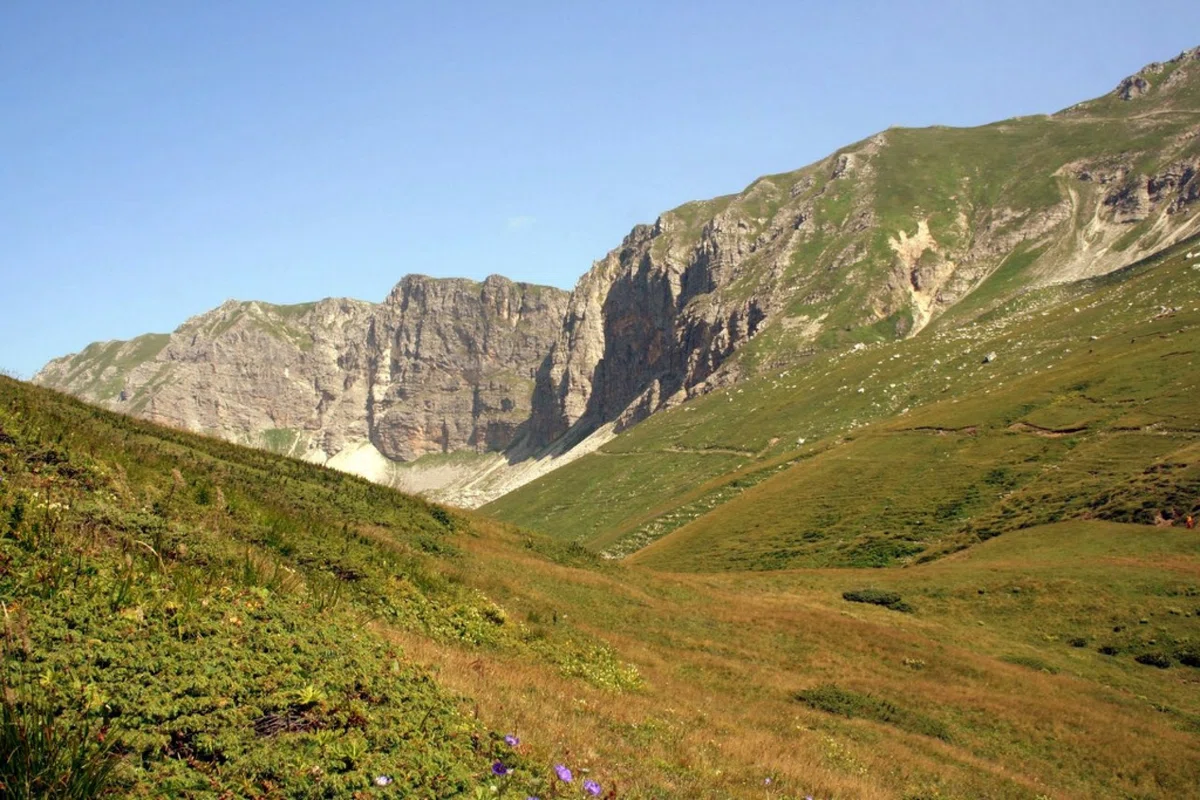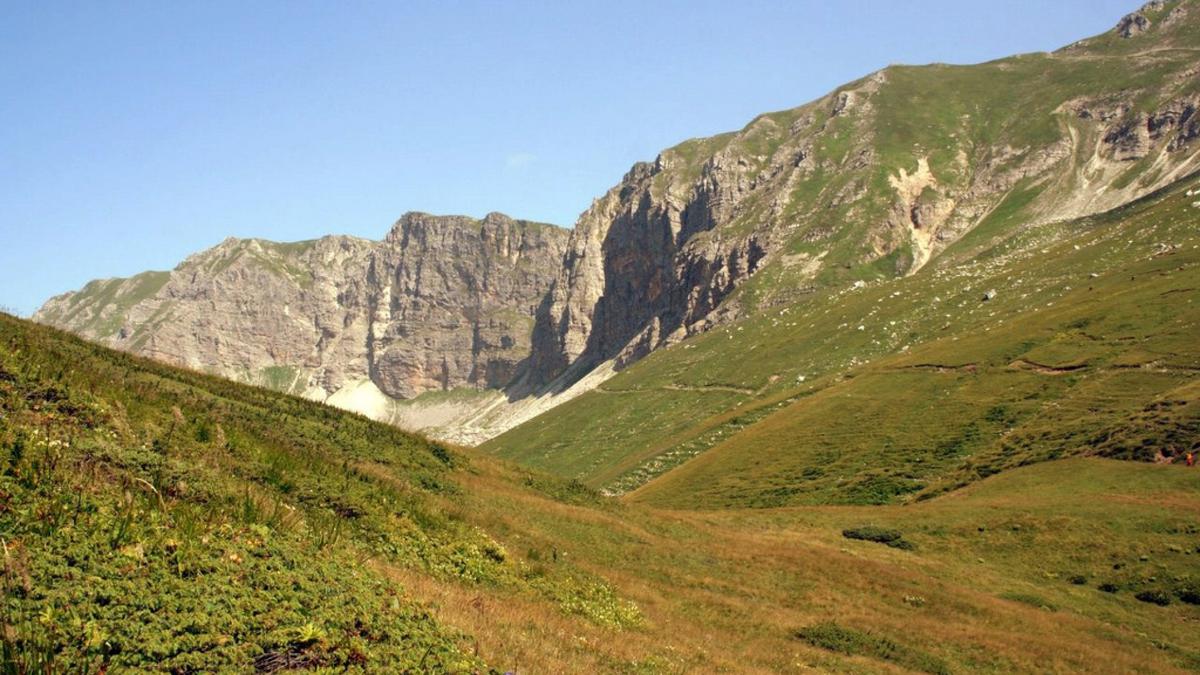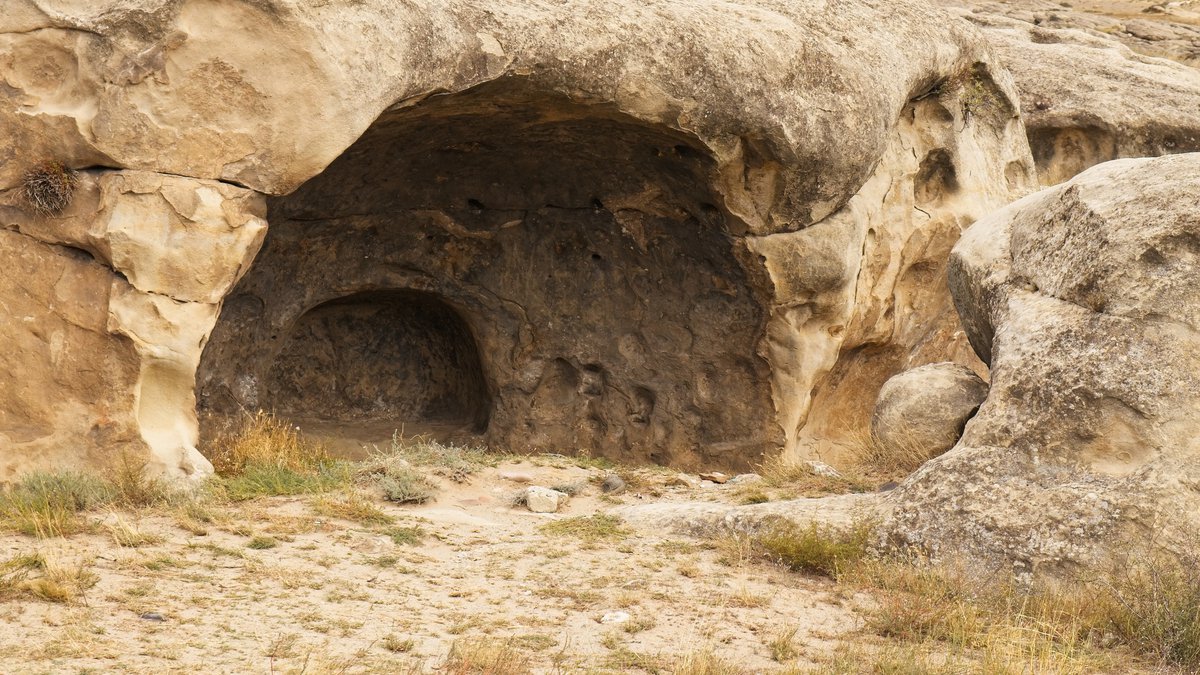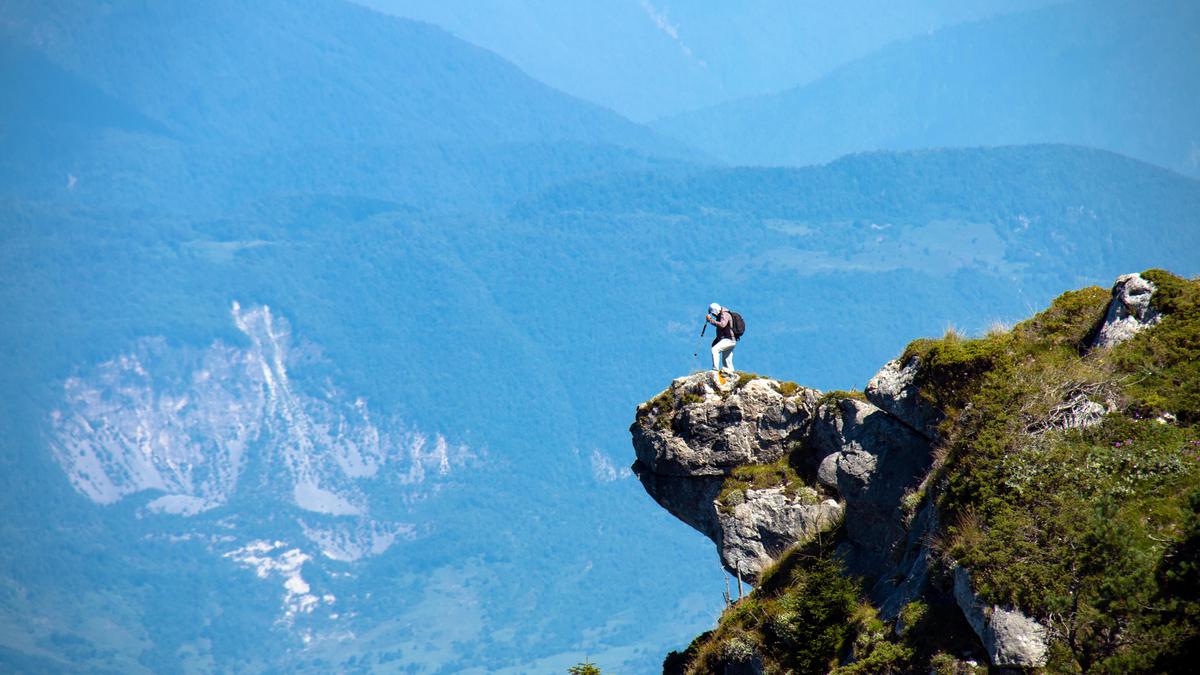
The most beautiful views in Georgia. Visit limestone massifs.
There are beautiful views from the limestone massifs. There are many popular arrays in Abkhazia. The Askhi massif is one of the highest, there are about 42 caves on the territory of this massif, many lakes and rivers. The Khwamli array is relatively small. Although the massif is small, there are many karst formations, a beautiful panorama of landscapes opens from here.
Askhi Limestone massif It is located in Western Georgia, on the Egrisi ridge, 40 km away. from Kutaisi, between several historical and geographical provinces (Imereti, Lechkhumi, Samegrelo). The limestone massifs are part of the watershed of the Tehura and Tskeniskali rivers.

Its highest peak is located at an altitude of 2520 meters above sea level. The relative height of the vertically towering slopes of the massif, reaching 1 km., creates an extraordinary landscape.
The Askhi limestone massif is one of the most spacious and highest within the limestone strip of the Caucasus. Its area exceeds 400 km2. The surface of the massif is aligned table-like and is represented by a variety of karst forms. There are more than eighty karst depressions on the territory of the massif, including 42 caves. The total length of the karst depressions is 4 km, and the total area exceeds 24 thousand km2. There are many underground streams, rivers and lakes. Some caves serve as natural freezers, as the ice does not melt here all year round. There are also living organisms, among which the limonia insect (Limonia nubeculozva Meg.) deserves special attention.
Stone Age human sites, various weapons and remains of ancient animals (bison, cave bear, cave lynx) have been found in some caves of Askhi. In the Middle Ages, caves, both natural and carved by people, served as fortresses and shelters.

Khvamli Limestone massif It is located in Western Georgia, in the southern part of the Lechkhum Ridge, on the watershed of the Rioni and Tskheniskali rivers, 25 kilometers fromKutaisi. The area of this massif (83 km2.) is relatively small, but the relative height reaches one kilometer.
Khvamli resembles a pyramid, the southern and western slopes of which are steeper than the northern and eastern ones. The southern slopes, the upper part of which has a 300-meter height, are almost vertical. The caves located here are the most inaccessible place in Georgia. Therefore, starting from the XIII century, the Georgian army used these caves to hide treasuries. According to legend, there was a cave of Jason not far from the Khvamli massifs. The site of the oldest man was discovered here.
Despite the small area, there are many karst formations on the Khvaml massif. Their number reaches 20, and the total length is a kilometer. Among them, it should be noted the Khvaml fortress-hollow, the Bogay cave and the Takenter well. The fortress-pit, covering an area of 60 m2, is located on a cliff and is a historical monument. In the Bogay cave, remarkable in its scale, there are ice stalactites and stalagmites, which the local population uses for medicinal purposes. You can descend into the Takenter well, which is 16 meters deep, through the hollow of a beech tree. It is known that the caves of the Khvalma massif are interconnected by "corridors".
A beautiful panorama opens from the Khvamli massif. From here you can clearly see: the Great Caucasian Ridge, its peaks, the Colchis lowland and the Adjara-Imereti ridge, towns and villages of the intermountain plains.













49 comments
Log in to leave a comment
Удивительное место для экскурсий!
✅ Положительный момент статьи: Таким образом, статья описывает известковые массивы Асхи и Хвамли, расположенные в Западной Грузии. Она подчеркивает красоту и уникальность природных образований, таких как карстовые пещеры, реки, озера и горы. Кроме того, статья упоминает историческое значение пещер, как убежища и крепости в средние века. Она также описывает легенды, связанные с массивами, и отмечает панорамные виды, которые открываются с Хвамли. В целом, статья представляет интерес для любителей природы и истории, а также для туристов, которые могут посетить эти массивы и насладиться их красой
✅: Отрицательный момент статьи: К сожалению, в данной статье нет отрицательных моментов, так как она описывает природные достопримечательности и исторические места Грузии. Однако, возможно, в других статьях или источниках можно найти отрицательные моменты, связанные с экологическими проблемами или социально-экономическими аспектами развития туризма в регионе
Несмотря на положительные и отрицательные моменты статьи, я благодарю автора на каталоге Мадлоба за интересную и полезную статью!!
Колодец Текентери — одна из ярких жемчужин среди многочисленных чудес массива Хвамли.
Попасть в карстовый колодец Текентери возможно только через дупло огромного многовекового букового дерева. Однако, хотелось бы точнее описать эту картину. В первую очередь, проход в колодец — это даже не дупло в обычном понимании, а промежность между корнями бука. С другой стороны примечательно, что корни дерева врослись в стенки скважины. За такую особенность, этот колодец и дерево, еще в советские времена грузинскими учеными мужами был включен в Красную книгу охраны природы Грузии. Его даже упоминали как «Уникальный памятник Мирового масштаба».